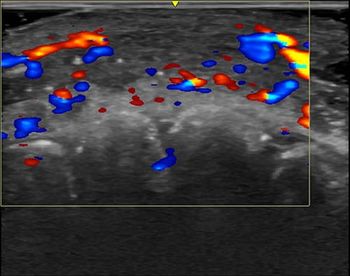
PET/MRI + Radiopharmaceuticals Can Identify Malignant Brain Tumors
Combination can also help patients avoid unnecessary invasive procedures.
Pairing PET/MRI imaging with radiopharmaceuticals can offer double benefits to patients. Not only can it accurately pinpoint malignant brain tumors, but it can help individuals side-step invasive procedures.
Although this combination, including radiopharmaceuticals, such as 18F-fluorethyl tyrosine (18F-FET), is already known to improve diagnostic performance, less is known about the role it plays in clinical decision-making.
In a study published recently in the Journal of Nuclear Medicine, a team of investigators from Germany examined how the combination worked with patients who have brain tumors.
For their study, the team led by Cornelia Brendle from the University Hospital Tuebingen radiology department, evaluated how well 18F-FET PET/MR performed in detecting malignant brain tumors. Not only did the combination pinpoint these tumors with 85-percent accuracy, it also changed patient management decisions in 33 percent of cases. Additionally, the findings from the combination helped 20 percent of patients avert unnecessary follow-up procedures.
Based on these outcomes, the team said, it is possible that the combination could help patients who have non-malignant brain tumors who could likely fare better with a watchful waiting approach.
To reach their results, the team conducted a retrospective investigation with 189 patients who had brain tumors and who underwent multi-parametric 18F-FET PET/MR imaging between 2017 and 2018. Patients were considered to have a new diagnosis if the scan detected any untreated, suspicious lesions.
According to their analysis, in 93 percent of cases, this combination approach was able to successfully detect both actively growing malignant tumors or those that were being successfully treated. Consequently, this type of imaging option could help inform clinical decisions that could bring the most appropriate treatment options to patients in the most timely way.
Although further research is needed, the team said, the combination approach can offer benefits to patients.
“Adding 18F-FET PET to MRI…in a hybrid scanner has been reported to be reasonable in terms of cost-effectiveness in selected patients,” they said.
For more coverage based on industry expert insights and research, subscribe to the Diagnostic Imaging e-Newsletter
Newsletter
Stay at the forefront of radiology with the Diagnostic Imaging newsletter, delivering the latest news, clinical insights, and imaging advancements for today’s radiologists.




























